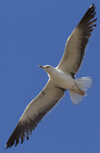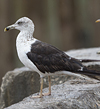 nominate Lesser Black-backed Gull (L. f. fuscus)
nominate Lesser Black-backed Gull (L. f. fuscus)
(last update:
Amir Ben Dov (Israel)
Hannu Koskinen (Finland)
Mars Muusse (the Netherlands)
fuscus 1cy July
fuscus 1cy Aug
fuscus 1cy Sept
fuscus 1cy Oct
fuscus 1cy Nov
fuscus 1cy Dec
fuscus 2cy Jan
fuscus 2cy Feb
fuscus 2cy March
fuscus 2cy April
fuscus 2cy May
fuscus 2cy June
fuscus 2cy July
fuscus 2cy Aug
fuscus 2cy Sept
fuscus 2cy Oct
fuscus 2cy Nov
fuscus 2cy Dec
fuscus 3cy Jan
fuscus 3cy Feb
fuscus 3cy March
fuscus 3cy April
fuscus 3cy May
fuscus 3cy June
fuscus 3cy July
fuscus 3cy August
fuscus 3cy Sept
fuscus 3cy October
fuscus 3cy Nov
fuscus 3cy Dec
fuscus 4cy Jan
fuscus 4cy Feb
fuscus 4cy March
fuscus 4cy April
fuscus 4cy May
fuscus 4cy June
fuscus 4cy July
fuscus 4cy Aug
fuscus 4cy Sept
fuscus 4cy Oct
fuscus 4cy Nov
fuscus 4cy Dec
fuscus ad Jan
fuscus ad Feb
fuscus ad March
fuscus ad April
fuscus ad May
fuscus ad June
fuscus ad July
fuscus ad Aug
fuscus unringed Aug
fuscus ad Sept
fuscus ad Oct
fuscus ad Nov
fuscus ad Dec
Images presented in this section are from Israel, where nominate fuscus is a regular visitor.
Primary moult
The moult sequence in nominate Lesser Black-backed Gull Larus fuscus fuscus was already described by Stresemann & Stresemann in 1966 in Journal für Ornithologie. They described a periodische Staffelmauser, a step-wise moult. Normally, large white-headed gulls in Europe start replacement of the remiges during the breeding season and finish this moult in autumn, prior to their migration.
Stresemann & Stresemann described fuscus as an exception as it doesn't start the remiges moult before arriving at the wintering grounds in Africa and the Mediterranean. For a long-distance migrant like fuscus, this seems to be a suitable strategy. This pattern can also be found in long-distance migrants like Terns (Sternidae).
Stresemann & Stresemann examined skin collections and failed to find any adult L. f. fuscus originating from the breeding or autumn migratory range that was in active primary moult. Therefore they presumed the entire moult stage takes place on the wintering grounds. Adult birds on migration had been collected (Rossitten Bird Observatory, Russia) and these birds confirmed the theses: they must have suspended moult, as Heinroth (1928, Die Vögel Mitteleuropas) concluded: adult fuscus doesn't show active primary moult on migration. They either suspend moult or do not commence moult before arrival on the wintering grounds.
However, there are a few museum skins that do show adult fuscus in primary moult: the Zoological Museum of Helsinki (not visited by the Stresemanns in 1966) has 21 skins of summer / early autumn birds: 8 are showing moult in the primaries. The museums of Copenhagen and Tring have 10 skins in collecting from the same period: one is showing active primary moult.
The last decades, the general idea about the renewal of the primaries in adult fuscus has been changed slightly. Field research showed that a small majority (up to 60% in southern Sweden) of the adult fuscus have started to replace the inner one or two primaries on the breeding ground by late August. This primary moult is suspended until arrival at the tropical wintering grounds. Fuscus complete their primary moult in February and March, just before leaving again to the breeding grounds in Scandinavia and northern Russia. By March, the inner primaries may in some birds included in the primary moult, in a second wave. This seems to be a common feature in sub-adult birds.
Location
A few of the pictures on this October page are from the Netherlands, Westkapelle is a good place in NW Europe to see ringed fuscus from Norway. But the main route to the wintering grounds lead us through Eastern Europe, and by far most pictures are from Ashdod, Israel, taken by Amir Ben Dov.
Tables
| Priamy moult in adult fuscus in October, Israel. Data by Amir Ben Dov: | ||||||
| score | P5-P10 old | P6-P10 | P7-P10 | P8-P10 | P9-P10 | n: |
| P3 f.g. | 0 | - | - | - | - | 0 |
| P4 f.g. | 0 | - | - | - | - | 0 |
| P5 f.g. | 0 | - | - | - | - | - |
| P6 f.g. | - | - | - | - | - | - |
| P7 f.g. | - | - | - | - | - | - |
| n: | 0 | - | - | - | - | 0 |
| f.g. (fully grown): defined as the longest new primary present in the folded wing. Thus, when P8 already slightly exceeds the length of P7, we note 'P8 fully grown'. In single observations, it would otherwise be very hard to tell if a feather still has to grow a fraction longer or not. P5-P10 old: P5 still present and old, as are the outer primaries. |
||||||
 L. f. fuscus sub-adult December 23 2011, Ashdod, Israel. Picture: Amir Ben Dov. All primaries, secondaries and tail old.
L. f. fuscus sub-adult December 23 2011, Ashdod, Israel. Picture: Amir Ben Dov. All primaries, secondaries and tail old. L. f. fuscus sub-adult, December 14 2013, Ashdod, Israel. Picture: Amir Ben Dov. P7-P8 missing.
L. f. fuscus sub-adult, December 14 2013, Ashdod, Israel. Picture: Amir Ben Dov. P7-P8 missing.